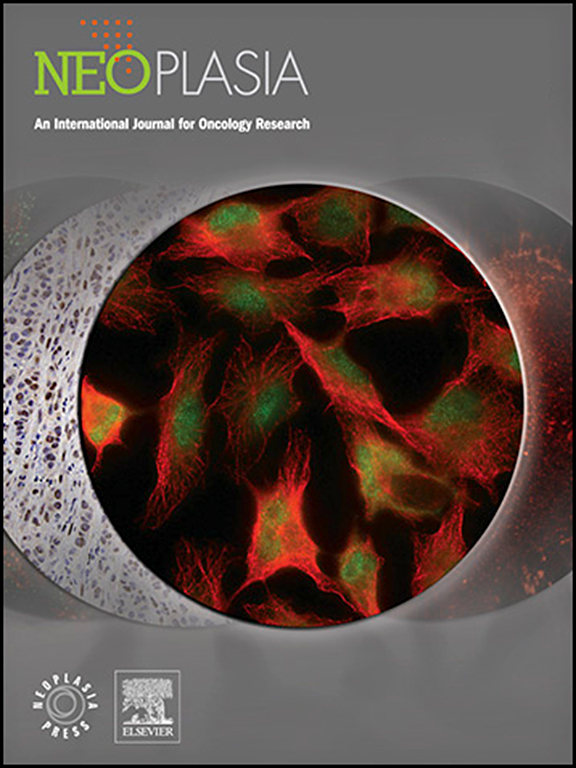A methyl-to-acetyl switch in H3K27 drives metabolic reprogramming and resistance to BRAFV600E inhibition in melanoma
IF 7.7
2区 医学
Q1 Biochemistry, Genetics and Molecular Biology
引用次数: 0
Abstract
The BRAFV600E pathway and epigenetic machinery are central to melanoma pathogenesis. However, how these processes intersect and their potential for synthetic lethality remains unclear. Here, we identified a BRAFV600E-driven epigenetic mechanism in melanoma that involves a H3K27 methylation-to-acetylation switch, facilitating metabolic adaptation to targeted therapies. Inhibition of BRAFV600E downregulates the methyltransferase EZH2, leading to KDM6A-mediated removal of H3K27me3 and a subsequent increase in H3K27 acetylation (H3K27ac). This H3K27 methyl-to-acetyl conversion shifts chromatin from a repressive to an active state, thereby promoting gene transcription through the acetylation reader BRD4. Specifically, the KDM6A-H3K27ac-BRD4 axis upregulates PGC1α, a master regulator of mitochondrial metabolism, enabling melanoma cells to sustain oxidative metabolism and survive BRAFV600E-targeted therapies. Blocking this H3K27 methyl-to-acetyl switch disrupted metabolic adaptation and sensitized melanoma cells to BRAFV600E inhibition. In conclusion, we revealed an epigenetic and metabolic reprogramming mechanism that enables melanoma to survive the treatment with BRAFV600E inhibitors, presenting druggable targets within the H3K27 modification pathway that could enhance the efficacy of BRAF-targeted therapies in melanoma patients.
在黑色素瘤中,H3K27中的甲基-乙酰开关驱动代谢重编程和对BRAFV600E抑制的抗性
BRAFV600E通路和表观遗传机制是黑色素瘤发病的核心。然而,这些过程如何交叉以及它们潜在的合成致命性仍不清楚。在这里,我们确定了黑色素瘤中brafv600e驱动的表观遗传机制,涉及H3K27甲基化到乙酰化开关,促进代谢适应靶向治疗。BRAFV600E的抑制下调了甲基转移酶EZH2,导致kdm6a介导的H3K27me3的去除和随后H3K27乙酰化(H3K27ac)的增加。这种H3K27甲基-乙酰化转化将染色质从抑制状态转变为活性状态,从而通过乙酰化解读器BRD4促进基因转录。具体来说,KDM6A-H3K27ac-BRD4轴上调线粒体代谢的主要调节因子PGC1α,使黑色素瘤细胞能够维持氧化代谢并在brafv600e靶向治疗中存活。阻断这种H3K27甲基-乙酰开关破坏了代谢适应,使黑色素瘤细胞对BRAFV600E抑制敏感。总之,我们揭示了一种表观遗传和代谢重编程机制,使黑色素瘤能够在BRAFV600E抑制剂的治疗中存活下来,并在H3K27修饰途径中提出了可药物靶点,可以增强braf靶向治疗黑色素瘤患者的疗效。
本文章由计算机程序翻译,如有差异,请以英文原文为准。
求助全文
约1分钟内获得全文
求助全文
来源期刊

Neoplasia
医学-肿瘤学
CiteScore
9.20
自引率
2.10%
发文量
82
审稿时长
26 days
期刊介绍:
Neoplasia publishes the results of novel investigations in all areas of oncology research. The title Neoplasia was chosen to convey the journal’s breadth, which encompasses the traditional disciplines of cancer research as well as emerging fields and interdisciplinary investigations. Neoplasia is interested in studies describing new molecular and genetic findings relating to the neoplastic phenotype and in laboratory and clinical studies demonstrating creative applications of advances in the basic sciences to risk assessment, prognostic indications, detection, diagnosis, and treatment. In addition to regular Research Reports, Neoplasia also publishes Reviews and Meeting Reports. Neoplasia is committed to ensuring a thorough, fair, and rapid review and publication schedule to further its mission of serving both the scientific and clinical communities by disseminating important data and ideas in cancer research.
 求助内容:
求助内容: 应助结果提醒方式:
应助结果提醒方式:


